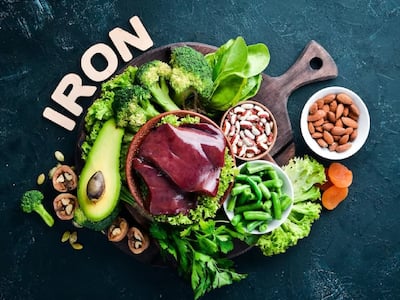
Red Cell Distribution Width (RDW) is the first index to become abnormal in iron deficiency.
Often, patients with iron deficiency anaemia do not respond to iron supplementation treatment and might go months with little or no progress in anaemia. This can turn out if the dose is too low or due to missed doses. However, suppose there are no improvements even after adjusting the dosage and taking the supplement as directed by the doctors. In that case, it may mean that the body is not riveting iron correctly or that the anaemia is due to thalassemia, an inherited blood disorder. Here is the difference between iron deficiency and thalassemia, explained by Dr Preeti Kabra, Chief of Lab, Neuberg Diagnostics.
Thalassemia Trait
Thalassemia produces less haemoglobin, a protein that’s a vital part of red blood cells, than it is supposed to, causing anaemia. This is called hemolytic anaemia. This is a condition where the body lacks sufficient haemoglobin to carry enough oxygen to tissues. As an outcome, you may frequently feel weak or tired. The patients who take thalassemia are also referred to as having the thalassemia trait, which is sometimes misjudged as having iron deficiency anaemia.
Why Does The Thalassemia Trait Gets Misjudged As Iron Deficiency Anemia?
The lab values are very alike in iron deficiency and thalassemia traits. At the first glimpse of the complete blood count (CBC), haemoglobin will be low. At this point, anaemia and the fact that the corpuscular volume (MCV), or the extent of the red blood cells, is lacking. Patients with these changes in CBC have iron deficiency anaemia. Testing for iron deficiency can be tricky. The iron level is determined by diet. If a patient goes for the testing in the morning without eating anything, their iron level may be low as they have not yet eaten anything with iron. A more proficient test is the ferritin level, which measures the body’s iron level.
READ RELATED: I Tried Fried Fish from 5 Restaurant Chains & This Was the Hands-Down Winner
Differentiating Between Thalassemia Trait From Iron Deficiency Anemia
- The first difference is in the red blood cell (RBC) count. In iron deficiency, the value of RBC is low because the bone marrow cannot produce red blood cells. In the thalassemia trait, RBC is normal to high.
- A more precise test, called haemoglobin electrophoresis, calculates the different types of haemoglobin in our blood. There should be haemoglobin A and A2 in a grown person. Patients with beta thalassemia trait will have high haemoglobin A2 and F (fetal).
- A series of tests includes a comprehensive peripheral blood picture, Hb A2 assessment, serum iron, Total Iron Binding Capacity (TIBC), serum ferritin and transferrin saturation to distinguish Iron Deficiency Anemia (IDA) from Beta Thalassemia Trait ( TT). These tests are usually available as Anemia profiles in more extensive set-up labs.
- The differentiation between IDA and TT is vital for two reasons; first, if TT is misdiagnosed as IDA, then Hemoglobin won’t improve in TT, and the doctor will suggest unwanted iron. The second reason is that if TT is misdiagnosed as IDA, the individual may marry a TT, resulting in thalassemia major in the offspring.
- Red Cell Distribution Width (RDW) is the first index to become abnormal in iron deficiency. RDW denotes anisocytosis (a patient’s red blood cells are of unequal size). Its value is increased in IDA and is near normal or mildly increased in TT.
- Thus, those with Mentzer Index <13 can be subjected to estimation of HbA2 by haemoglobin electrophoresis for confirmation of TT. This can be cost-effective as only those with a high probability of having beta thalassemia undergo the financial burden of haemoglobin electrophoresis.
Total Wellness is now just a click away.
Follow us on
Don’t Miss Out on the Latest Updates.
Subscribe to Our Newsletter Today!
window.addEventListener(‘load’, (event) => {
$(‘#commentbtn’).on(“click”,function(){
(function(d, s, id) { var js, fjs = d.getElementsByTagName(s)[0]; if (d.getElementById(id)) return; js = d.createElement(s); js.id = id; js.src = “//connect.facebook.net/en_US/sdk.js#xfbml=1&version=v2.3”; fjs.parentNode.insertBefore(js, fjs);}(document, ‘script’, ‘facebook-jssdk’));
$(“.cmntbox”).toggle();
});
});






